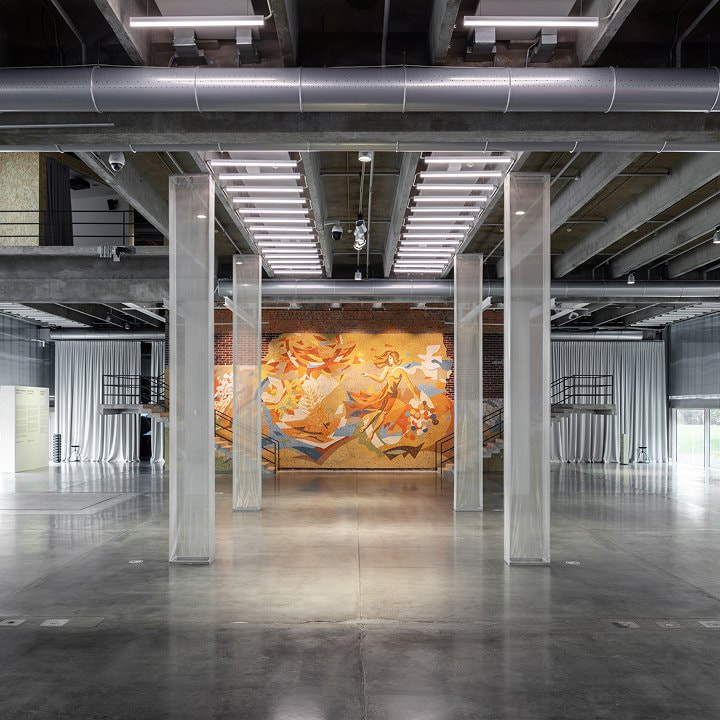Natalya Timofeeva’s project Untitled is the latest work by a contemporary artist commissioned for Garage Atrium and interacts with the architecture of the building and the developing collection.
From the very beginning of her creative journey artist Natalya Timofeeva has made site-specific works, an unusual genre in Russian contemporary art.
Site-specific art emerged in the 1970s as a logical development of the ideas of conceptualism and minimalism. Its key aspect, which defines it regardless of the medium, is that site-specific works are created in direct contact with their environment. They respond to their context, be it a museum space or urban or natural landscapes. When relocated, such works lose some of their meaning. Site-specific art is therefore opposed to both classical art and the modernist tradition, which produced easily movable, and hence commercialized, artworks.
Untitled is Natalya Timofeeva’s first work, made in 2014 for the self-organized Elektrozavod Gallery, which she co-founded in 2012. The project responded to the architecture of the space of the former factory by doubling its columns using green debris netting. The light from the large windows shone through the structures, highlighting their ephemeral nature.
The choice of materials indicated the state of Moscow in the early 2010s: a constantly changing urban organism. Its non-stop construction and renovation work made debris netting a recognizable material—a symbol of the never-ending renewal of the Russian capital, where the destruction of the old, the erection of the new, and the unavoidable losses and discoveries of renovation were veiled in a semi-transparent fabric that looked like bandages on the face of the city.
A metaphor for Moscow’s urban policy, the translucent columns also created a dissonance between their promise of strength and durability—as they imitated the dimensions of real-life columns—and the sensation of fragility and vulnerability of the lightweight shadows of industrial architecture that did not in fact hold or support anything.
For Garage Museum of Contemporary Art, Natalya Timofeeva has revisited the project: the translucent columns integrated into the space of the Atrium repeat the architectural detail from the ground floor of the Seasons of the Year pavilion, which reopened in 2015 as a Garage building. These elements are slightly displaced in relation to the originals, as if the clear-cut and reliable supporting structures that Garage inherited from Soviet modernism are moving around randomly, freed of their immanent properties. The experience of losing one’s grounding in reality, the fleeting nature of existence, the immateriality of the visible is but one of the aspects of this site-specific installation. Here, Natalya Timofeeva has replaced the debris netting with a more technological material: a transparent metallic tulle, which further elevates the structural elements of her work. The soaring columns echo the movement of the flying girl in the mosaic—an allegory of fall. Like her, they are airy and light.
At the same time, the ghostlike reflections of the real point to one of the main interests of the Museum, which is temporary architecture—a reminder of the nomadic life of contemporary art, which searches for its place in human society and is destined to survive in the turbulence of an era of complexities. The screening properties of the material can also be interpreted as a reference to the protective function of art, which saves the space from an overload of toxic information.
Natalya Timofeeva
Untitled, 2014/2025
Metallic screening fabric
Courtesy of the artist

